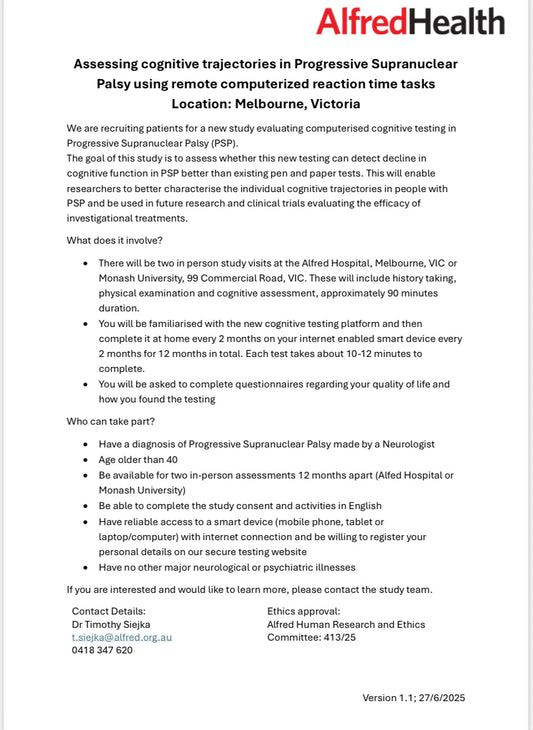- Movement Disorders: All these conditions present with parkinsonian features like rigidity, bradykinesia (slowness of movement), and sometimes tremor, though not always as pronounced or typical as in PD.
- Neurodegenerative Nature: Each of these diseases involves the progressive degeneration of nerve cells in the brain, leading to worsening symptoms over time.
- Response to Levodopa: Generally, these disorders show a poor or transient response to levodopa therapy, which is often a hallmark for distinguishing them from idiopathic Parkinson’s disease.
- Prognosis: They tend to have a more rapid progression compared to PD, leading to significant disability over a shorter period.
- Symptoms: Early and frequent falls, especially backward; supranuclear vertical gaze palsy (difficulty moving the eyes up and down), and cognitive issues like apathy and executive dysfunction.
- Pathology: Primarily a tauopathy, where the protein tau accumulates in the brain.
- Unique Feature: PSP often presents with a characteristic "procerus sign" (a furrowed brow) due to the involvement of facial muscles.
- Symptoms: Includes parkinsonian symptoms but also features prominent autonomic nervous system dysfunction (like orthostatic hypotension, urinary incontinence, and sexual dysfunction), cerebellar ataxia (loss of coordination), and sometimes respiratory issues.
- Pathology: This is an alpha-synucleinopathy, similar to PD, but with synuclein deposits in glial cells rather than predominantly in neurons.
- Unique Feature:
- MSA can be divided into cerebellar (MSA-C) and parkinsonian (MSA-P) types based on the predominant symptoms.
- Symptoms: Asymmetric parkinsonism, apraxia (inability to perform learned movements), cortical sensory loss, alien limb phenomenon (where the limb acts independently), and cognitive/neuropsychiatric symptoms.
- Pathology: Like PSP, CBD involves tau proteinopathies.
- Unique Feature: The marked asymmetry of symptoms is a key distinguishing characteristic, often affecting one limb significantly more than the others.
- Symptoms: Fluctuating cognition with variations in attention and alertness, recurrent visual hallucinations, and parkinsonism. Additional features might include REM sleep behavior disorder, autonomic dysfunction, and neuroleptic sensitivity.
- Pathology: An alpha-synucleinopathy, characterized by Lewy bodies in the brain, similar to PD but with different distribution and impact.
- Unique Feature: Early cognitive impairment is a defining feature, often preceding or closely following motor symptoms.
Onset and Progression:
- PSP and CBD often begin in the 60s with a rapid progression towards severe disability.
- MSA might start in one's 50s or 60s and also progresses rapidly but with a focus on autonomic and cerebellar dysfunction.
- DLB tends to affect older individuals, with dementia symptoms often appearing alongside or before parkinsonism, with a variable course.
- PSP focuses on gaze issues and balance problems.
- MSA brings in autonomic failure alongside parkinsonism.
- CBD showcases asymmetry and cortical dysfunction.
- DLB emphasizes cognitive fluctuations and hallucinations.
- PSP treatment focuses on managing symptoms with occupational/physical therapy, though there are trials on tau-targeting drugs.
- MSA requires careful management of autonomic symptoms, with treatments like midodrine for blood pressure issues.
- CBD's treatment is largely supportive, aiming at symptom relief.
- DLB treatment includes managing cognitive symptoms with cholinesterase inhibitors and careful use of antipsychotics for hallucinations.


 Donate
Donate



